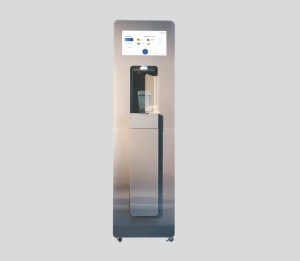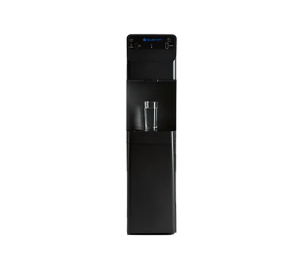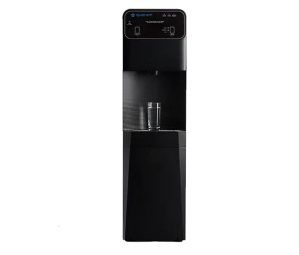
Understanding average water usage per person in office buildings
Water is essential for day-to-day operations in office buildings and the overall well-being of employees and visitors. OSHA requires you to supply potable water and clean drinking water for your employees, but how much water do you need?
By understanding the average water usage per person in office buildings, you can comply with regulations while ensuring employees and visitors have a good experience in your facility. At the same time, these statistics help you manage resources more effectively and promote sustainability.
For example, how do you conserve water and reduce operational costs if you don’t understand usage trends in modern workplaces? Discover average water use trends below and get some tips for reducing water usage.
Overview of office water usage
Per-person office water usage is a metric that quantifies the amount of water consumed in office buildings. You can measure it daily or monthly, but it includes water used for:
- Drinking and preparing food
- Washing hands
- Cleaning activities
- Flushing toilets
- Any other water-based processes related to your business
You can look at office water usage for an entire building or per employee and compare those metrics to industry benchmarks. That analysis helps you understand your water needs and efficiency and identify conservation opportunities.
What are the average water usage statistics in offices?
Around 9% of commercial water use in the United States relates to office buildings. The amount of water used in each building varies widely based on factors like the size of the office, the number of employees, available facilities, the geographic location of the building, and the type of work done inside.
How much water does an office building use?
Typical water use per person in an office is approximately 15 to 20 gallons per day. To understand how that might impact total water use, consider these hypothetical scenarios:
- A small office building with 15 employees would use 225 to 300 gallons of water per day — or 6,750 to 9,000 gallons per month.
- A mid-size building with 100 employees would use 1,500 to 2,000 gallons per day — or 45,000 to 60,000 per month.
- A corporate building with 300 employees would use 4,500 to 6,000 gallons per day — or 135,000 to 180,000 per month
What is water used for in offices?
According to the U.S. Environmental Protection Agency, in office environments, the main end uses of water include:
- 37% for restrooms
- 28% for cooling and heating
- 22% for landscaping
- 13% for kitchen and dishwashing
How does the 15 to 20 gallons of water per person break down into those categories? Employee hydration is essential for productivity and well-being. Installing bottleless water coolers ensures employees always have access to fresh, filtered water — without the waste and hassle of bottles and jugs. Water for your office is flowing into uses like:
- Flushing toilets. Standard toilets use around 1.6 gallons of water for every flush.
- HVAC functions. An optimized system uses 2 to 2.5 gallons per ton-hour of cooling.
- Drinking. Assuming people are hydrating well in the workplace, they may be drinking around half a gallon of water each work day.
- Hand washing. Washing your hands for the recommended 20 seconds uses 0.75 gallons of water if you leave the water running the entire time.
Why should businesses try to conserve water?
A water and sewer inflation rate of 5.85% means water costs increase by 100% every 12 years or so. Based on that, average water costs in 2030 may be $25 per 1,000 gallons — and that figure could reach $45 per 1,000 gallons by 2040. For an office with 100 employees, that could mean a cost of up to $2,700 per month — or over $32,000 annually — for water in 2040.
Reducing water usage in your office building can help you save money now and as water becomes a more expensive utility.
Implementing methods to conserve water at work also promotes sustainability and reduces resource use and infrastructure burdens. As it is, according to the 2023 Drinking Water Infrastructure Needs Survey and Assessment, the United States needs to invest around $625 billion into infrastructure to ensure enough clean drinking water to meet needs in 2041 and beyond. By reducing water consumption, offices can help protect the infrastructure.
Strategies for reducing office water usage
You can reduce average water usage per person in your office building without negatively impacting employee hydration.
A first step in reducing office water usage is to implement simple measures such as:
- Installing low-flow toilets and faucets. A low-flow toilet, for instance, uses around 1.28 gallons per flush compared to 1.6 gallons for standard models. Consider an office of 100 employees. If each employee only flushes the toilet twice per day on average, that’s a savings of 64 gallons per day, almost 2,000 gallons per month and more than 23,000 gallons per year.
- Identifying and fixing leaks promptly. A dripping faucet or slow pipe leak wastes 7 gallons of water per day on average. Ensure you have a process for finding and correcting leaks to avoid such waste.
- Investing in water-efficient landscaping. Choose plants for your exterior areas that can survive mostly on the precipitation levels in your area and require less watering.
- Investing in technological solutions to achieve more efficient water use. Smart water management systems monitor consumer patterns in real-time so you can adjust processes, training, or fixtures to reduce waste. Some offices may be able to engage in rainwater harvesting and greywater recycling to reduce non-potable water draw on the system. These sources can be used for flushing toilets or irrigation.
Reduce office water costs with bottleless water coolers
When it comes to conserving drinking water, consider an alternative to plastic bottled water. Producing just one plastic jug requires between 2 to 5 jugs of water. This includes all the steps involved in extracting petroleum, making the plastic, and shaping the bottle. Additionally, another bottle’s worth of water is used in the process to fill the plastic bottles—this includes energy generation, cleaning used bottles before reuse, and other parts of the bottling process.
Switching to bottleless water coolers can help you avoid many of the added water waste associated with bottled water manufacturing and bottled water services. Discover how Culligan Quench’s bottleless water coolers can improve your office’s sustainability efforts. Schedule a consultation today to find the best solution for your business.
Recommended products
Culligan Quench has an advanced suite of point-of-use systems that are designed to meet the needs of workplaces of all shapes and sizes. Here are some products we recommend for your business.
Twist Flavored Water Dispenser

Q4 Touchless Bottleless Water Cooler
Available with quenchWATER+ electrolyte water

Q12 Touchless Bottleless Water Cooler
Available with quenchWATER+ electrolyte water